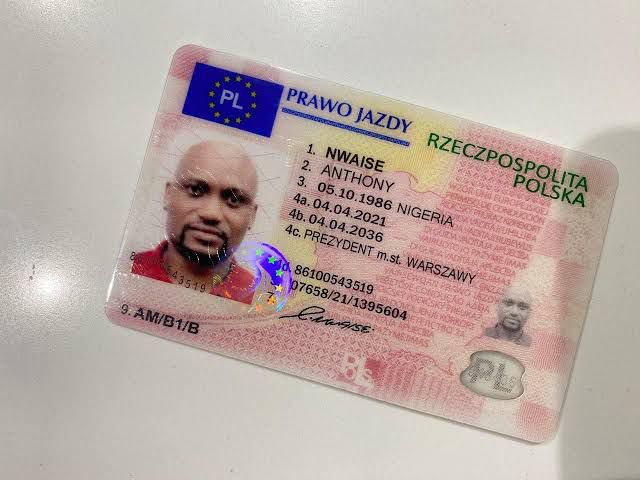Understanding Driving Licenses: Types, Requirements, and Frequently Asked Questions
Driving is a basic aspect of modern life, and obtaining a driving license is a crucial turning point for many individuals. This post checks out the numerous kinds of driving licenses available, the requirements to acquire them, and answers commonly asked concerns related to the topic. A knowledgeable perspective on driving licenses can help people comprehend the significance of selecting the correct type of license to satisfy their requirements.
Types of Driving Licenses
Driving licenses can vary in between nations and regions, but they usually fall under several significant categories. The following table summarizes the most common types of driving licenses, including their purposes and typical limitations.
| Type of License | Description | Common Restrictions | Eligibility Age |
|---|---|---|---|
| Student's Permit | Enables novice drivers to practice. | Should drive with a licensed grownup. | 16-18 years old |
| Class C License | Standard license for traveler automobiles. | No constraint on number of guests. | 18 years or older |
| Class A License | Industrial license for large lorries. | Should follow more stringent policies. | 21 years or older |
| Class B License | For driving buses and bigger cars. | May need unique recommendations. | 21 years or older |
| Motorcycle License | For running motorcycles. | Must use a helmet; differs by state. | 16-18 years old |
| International License | Permits legal driving in foreign countries. | Need to possess a legitimate domestic license. | 18 years or older |
Learner's Permit
The student's license is the initial step for lots of individuals venturing into the world of driving. This permit enables novice chauffeurs to practice driving under monitored conditions, generally needing a certified adult over a particular age to accompany them in the automobile.
Class C License
The Class C license is the most commonly held driving license, allowing people to run basic passenger cars. just click the next webpage has fewer restrictions compared to other classifications.
Class A and B Licenses
Class A and B licenses are required for running industrial cars. These licenses need unique training and testing, guaranteeing that drivers are equipped with the abilities needed for navigating larger and more complicated automobiles safely.
Bike License
People interested in riding motorbikes need to get a motorcycle license, which can need additional training and screening. Security gear, such as helmets, is typically mandated by law.
International License
An international driving license makes it possible for people to drive in foreign nations, however it is essential to have a valid domestic driving license in conjunction with the worldwide permit.
Requirements to Obtain a Driving License
The requirements for obtaining a driving license can differ considerably by jurisdiction. However, there are common actions and criteria that a lot of applicants will come across. Below is a list of general requirements:
Age Requirement:
- Minimum age varies; student's licenses are typically issued at 16, while full licenses may require applicants to be 18 or older.
Vision Test:
- Most jurisdictions require applicants to pass a vision test to ensure safe driving abilities.
Composed Test:
- New motorists should pass a written exam that covers traffic laws, road indications, and safe driving practices.
Driving Test:
- Practical driving tests are carried out to show a candidate's ability to operate a lorry securely under numerous conditions.
Charges:
- Payment of application and testing fees is usually needed.
Proof of Identity:
- Applicants should offer legitimate identification, such as a passport or birth certificate, in addition to proof of residency.
Adult Consent (for minors):
- Parental or guardian permission is frequently required for applicants under the age of 18.
Comprehending the various kinds of driving licenses and their associated requirements is crucial for anybody aiming to drive lawfully and safely. Each license serves an unique function, dealing with different driving requirements, from basic lorries to business transport and motorbikes. By fulfilling the needed criteria and adhering to policies, striving motorists can enjoy the liberty of driving while guaranteeing their security and the safety of others.
Regularly Asked Questions (FAQs)
What do I need to bring when making an application for a driving license?
- You usually require to provide recognition, evidence of residency, and any required application costs. Talk to your regional DMV or licensing authority for particular requirements.
For how long does it take to acquire a driving license?
- The timeline can differ based upon individual situations, such as how quickly one can complete the needed tests, and whether there is a backlog at the licensing authority.
Can I drive with a learner's permit?
- Yes, however you should be accompanied by a licensed chauffeur and comply with constraints set by your local laws.
What happens if I stop working the driving test?
- You usually have the choice to retake the test after a designated waiting duration, which differs by jurisdiction.
Is it required to take a driving course?
- While not constantly mandatory, taking a motorist's education course can be helpful and is typically required for individuals seeking a student's license.
By being informed about the kinds of licenses available, the requirements essential for acquiring one, and the related policies, prospective drivers can navigate the procedure of obtaining a driving license with confidence.

